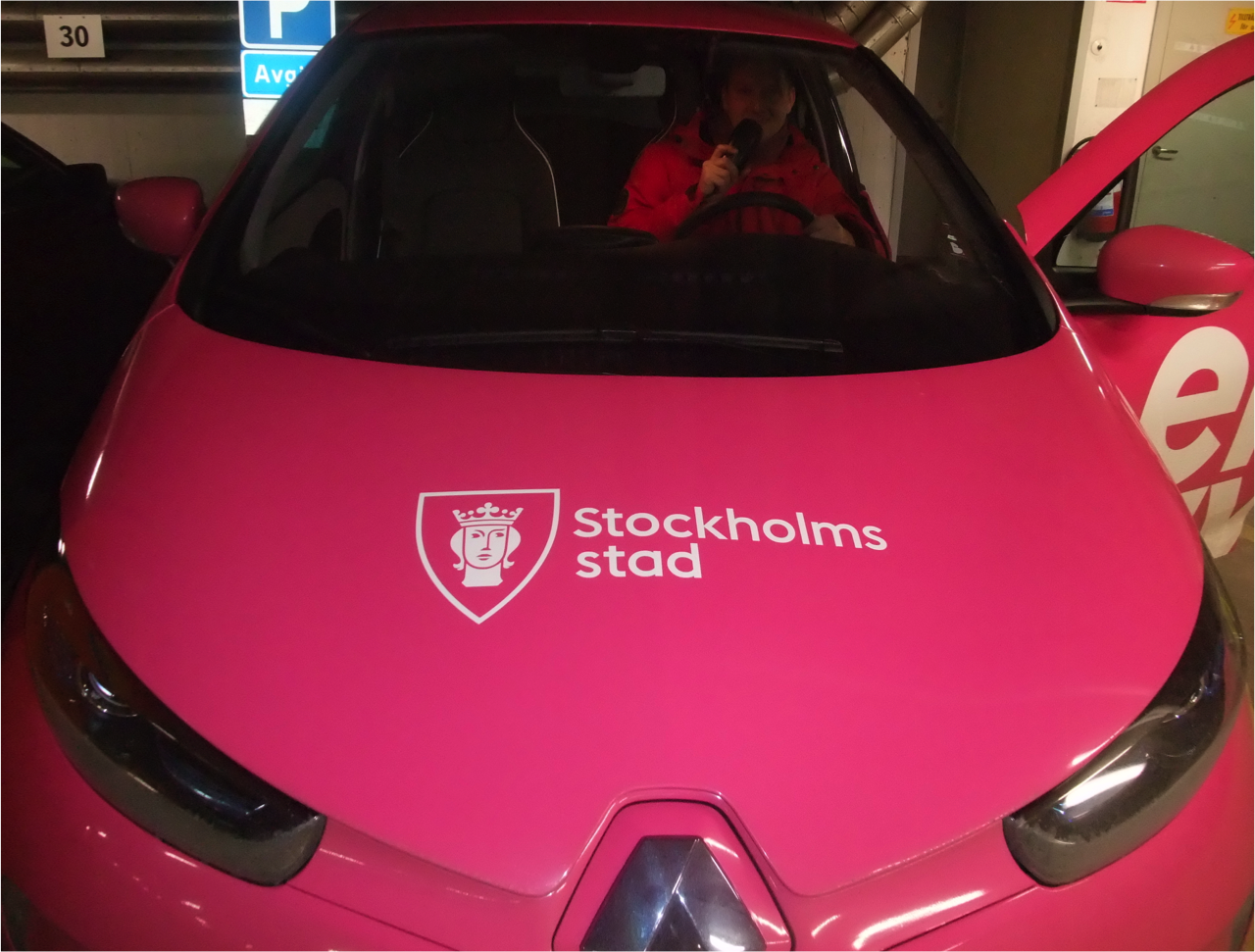Stockholm is the largest city in Sweden and its population is estimated to grow by 15% during the next 8 years. The City Council is, in spite of the population growth, decreasing its vehicle fleet and still planning to keep the inhabitants happy! Read more about the plan…
Stockholm city has a population of 900 000, in the 1,8 million Stockholm county. The city employs over 40 000 people to provide the service needed by Stockholmers and companies and owns 800 cars!
ABOUT TELLUS THINK TANK…read
The current traffic situation is already strained and inhabitants of the county are daily squeezing in subways, commuter trains and car queues, the region is undergoing rapid expansion. According to the prognosis Stockholm city will be
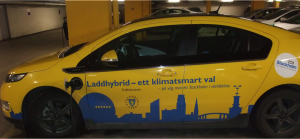
growing by 15% in the next eight years. By 2024 the city will have another 140 000 citizens, also in need of transport, putting further strain the city traffic situation.
Stockholm politicians are aware and cooperating to make a change. The current City Hall majority, a coalition between the Social Democrats, the Green Party, the Left Party and the Feminist Initiative have ambitious plans for a more sustainable city – see last week’s article in Tellus Think Tank.
Johan Seuffert is Fleet Manager for Stockholm City and responsible for the vehicle fleet strategy of the city. Johan says that Stockholm City is positive to growth but that many new residential homes need to be added to an already dense city. He says that it will be an important task to adjust the cityscape to the growing population.
-Car traffic is becoming a question of democracy, he explains, as a car needs at least 6 square meters compared to public transport busses with 40 passengers that only need 40 square meters. Busses are very seldom parked and don’t cram city streets.

Johan Seuffert reasons in similar lines as Stockholm City Traffic commissioner Daniel Helldén, when saying that it could be considered unfair that cars are covering the cityscape at the cost of public transport, cyclists and pedestrians. Read more.
There are several reasons that the City wants to prioritise pedestrian-, cyclist- and public transport traffic:
- Cars take a considerable amount of the cityscape, space that could be used to more sustainable traffic such as bicycle lanes, bicycle parking, sidewalks, bus lanes or even more residential homes.
- The cost of parking spaces when building new homes are making both streets and new residential quarters more expensive.
- The environmental reasons as equally important, fossil fuelled cars emit greenhouse gases and poisonous particles from fumes and tyres. They are the reason behind much of the sound pollution of the city.
Stockholm wants to increase the sustainability of the city. Johan Seuffert, what plans do you have for the 800 cars in the city vehicle fleet?
Stockholms city has several ambitious targets!
100% environmentally classed cars in the fleet
This target is not new and today 98 % of the 800 cars can be sorted under the Swedish national definition of
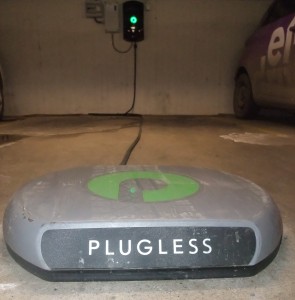
environmental vehicles.
There are some exceptions that have had to be made, Johan tells me, and mentions some emergency vehicles as the lake ice-plough used to clear snow for skaters. It has an emergency exit in the roof!
Johan Seuffert tells me that Stockholm, in all other cases try to adjust the fleet to the national environmental definition which the city, undeniably, has succeeded well with!
Tellus Think Tank has in earlier articles written about research that led to the sorting of diesel emissions under carcinogenic substances. Read more in the article about Urban Foresight. The Swedish national environmental definition still includes diesel fuelled cars as it has not been adjusted for a couple of years. However, Stockholm city only keeps a small amount of diesel fuelled vehicles in their fleet of 800.
The Stockholm City environmentally classed car fleet is allocated like this:
- Petrol fuelled 2.5%
- Diesel fuelled 5.8%
- Plug-in hybrids 7.3%
- Electrical / fuel hybrids 9.8%
- Electrical vehicles 11.2%
- Ethanol fuelled 16.9%
- Gas fuelled 44.2%
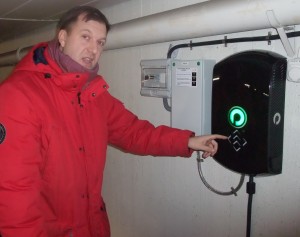
Johan, with his vast experience of vehicle procurement, says:
-There is a good supply of electrical vehicles up to medium size, such as a Volkswagen “Golf”.
Cars in a larger category such as electrically fuelled service vans with a longer range are not currently available. Therefore the city has had to find alternatives such as gas fuelled vans until better options are available.
One reason that the amount of electrical vehicles in the present fleet is relatively low is because the city is reducing the amount of cars and choosing to use the them for a longer period. Consequently the city is currently buying less cars which is both economically and sustainably beneficial!
Fuel targets. Stockholm has set fuel targets to encourage employees to tank with renewable fuels such as gas or ethanol. There is a bi-annual follow up on all fleet vehicles.
Increase electrical vehicles. Stockholm has set a goal to increase the portion of electrical vehicles by 2% a year.
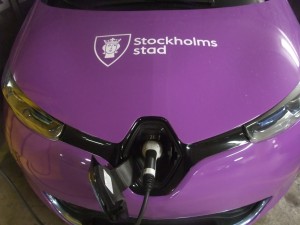
Not accounted for in the numbers above are the electrically charged “golf club cars” that the city uses for property and park maintenance
Stockholm fossil free 2030. Stockholm city has set an overall target, in accordance with the Swedish national target, to be fossil free by 2030. Johan explains that big changes will have to be made, all vehicles of certain types with a 10 year lifespan will have to be electrical from 2020. He mentions large trucks as an example.
What else is Stockholm doing to make the fleet greener?
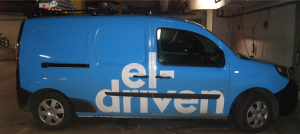
Reducing the vehicle fleet. The city is purchasing less new cars and encouraging employees to walk, cycle, use public transport or carpools. Thanks to the initiative the city has been able to reduce the amount of cars in the fleet with 400 vehicles since 2007.
Encouraging increased movement by foot, cycle and public transport. The City is actively encouraging employees to walk, cycle and use public transport in the line of duty.
The City is joining car-pools. Johan says that several city departments have joined a car-pool (Sunfleet). The car-pool owns the cars and civil servants and other customers handle their own reservations, pick-ups or drop-offs through a mobile App.
-The beauty in this system is that city employees use the car-pool vehicles during office hours and private individuals are the main customers at other times. It’s a perfect example of effectively used vehicles as they are seldom unused and serve several people’s needs instead of just one, says Johan.
What other car fleet improvements can we see ahead?
Stockholm City will continue the work of reaching current targets and increase the amount of car-pool usage. Johan foresees that new types of vehicles could come in use and mentions electrical bicycles or smaller electrical vehicles such as Renault Tweezy or Toyota iRoad. These two vehicles are still very new and untested by the city.
With Johan’s vast knowledge I ask him for his view: Are there are any excuses left for a private person, in order to buy a new car, not to choose an electrical car?
-The question is if one should buy a car at all? It would be better if we could all use the alternatives; public transport, car-pools, walking and cycling. If one needs to go on a road-trip then one can rent a car for the specific trip.
I think to myself that what sounds radical today might be normal in everyone’s life in a couple of years. At the end of this interview I am feeling happy as my city, Stockholm, is moving in the right sustainable direction!
Next week: We meet 20 people from around the world to hear what they are doing to save our planet! Let us notify you when the article is available, click here!
